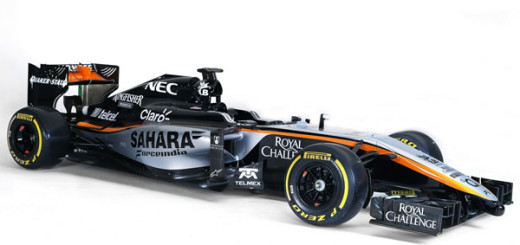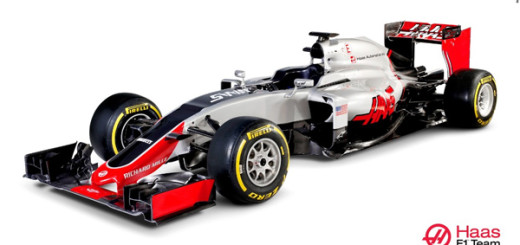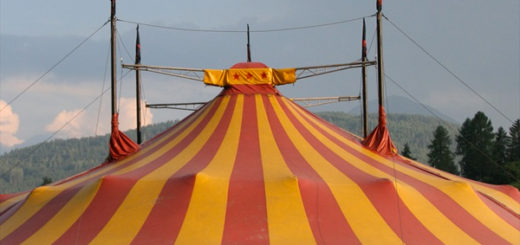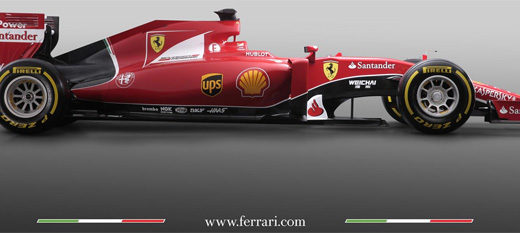Can F1 Be Saved From Bernie Ecclestone?
Regular visitors to my blog will know I am a big fan of autoracing. Â NASCAR, F1, LeMans, I enjoy them all. Â I even follow more obscure forms of motorsport like world rally, Aussie V8 Super Cup, and I watched speedway motorcycle racing from Sweden last night as well. Â If it goes fast, I have at least a passing interest in it.
Formula One (aka F1, Formula 1, or that series with the funny flat cars racing grand prix style, depending on your take on it) has been one of my true passions in life. Â I attended my first Grand Prix race a very, very long time ago, watching Mario Andretti driving a very swift black and gold car to the title. Â Those were the days, F1 was still sort of innocent and sweet, and for a fan it was the heyday. Â I can clearly remember standing next to a car up on jack stands getting it’s motor run up to full revs, the snaking tail pipes glowing red as the team mechanics worked on the car.
From that point, F1 has grown and matured and become not only one of the most watched forms of sports (not just motorsports) in the world, but also one of the most costly forms of sport period. Â It’s not unusual to hear of teams spending upwards to half a billion dollars a year to run 20 or so races. Â The sponsorships, the safety and presentation of the circuits, the hype, the media… it’s all gone straight through the roof and there is one guy to thank for it: Â Bernie Ecclestone. Â Bernie has come from gear head and team owner to run F1 with a single minded determined view and an iron fist (and occasionally an extended middle finger). Â You can read his biography on Wikipedia to know more about the man. Let’s just say that he has certainly been up to his fair share of weird deals and has just settled another case by making a 100 million dollar payoff.
The truth is Bernie Ecclestone is in his 84th year, and he won’t be around forever. It’s remarkable actually that someone of his age has maintained the strength and stamina to run such a large business and to travel all over the world to make it happen. He has been a fierce negotiator, a tyrant, a friend, and a heated enemy to many over the years, and even now, that fire and passion of sorts continues to burn. However, his time is nearly up, and for many, it’s not a moment too soon.
As a fan, I can tell you that Bernie has been a godsend and curse. He’s certainly taken F1 to new heights, yet at the same time it appears that he has gone way to far in the chase for the almighty dollar. F1 has races in all sorts of odd places, many of which are not F1 hotspots but rather wealthy nations trying to buff their image in the world by hosting high end events. They have the money, and when you have the money, Bernie has the time. The F1 calendar has changed dramatically in the last 10 years, with more races in Asia, in the Middle East, and soon in Russia. However, there are also a trail of failed races and wasted venues, such as South Korea (their poorly located track purpose built for F1 was essentially ignored by the public there) and India (a very difficult place to do business in). These venues are technically correct but disasters, both as businesses and for the fans of the sport.
Moreover, many of the new circuits added are tracks penned by one Hermann Tilke. This track designer and his company create incredibly safe and beautiful tracks, with generous runoff areas, technically challenging corners, and palatial paddocks, but often offer up little in the way of racing. It’s interesting to note that some of the most popular races from the fans stand point are tracks like Monaco, Montreal, and Brazil. These tracks aren’t safe, they weren’t design on the basic of technical challenge, they were made with what was there and they work well because they aren’t the perfect challenge. They have elements of risk in them for sure, and that risk certainly separates the men from the boys, as it were. There is no inherent risk at a track like Austin, in the US, which has huge paved run off areas, padded walls about a million miles back from the track, and technically demanding corners that don’t encourage actual racing. Tilke produces technical wonders, but harms the sport greatly. He is one of Bernie’s kept pets, or so it seems, as almost every new track without exception has Tilke’s boring fingerprints all over it.
The races are often in places where there are few actual F1 fans. Races have been taken away from some of the more traditional tracks which had good fan support and were enjoyed by viewers on TV as well, and replaced with races in newly rich oil nations and recently converted communist dictatorships. The Chinese Grand Prix in Shanghai has about double the seating capacity that they really need, the locals just don’t turn out and are unwilling to pay the equivilent of a months salary for the cheap seats. Tourists don’t want to go either, so entire huge sections of grandstands have been condemned and turned into empty advertising space instead. At many of the tracks, the Friday practice session and even qualifying times show half empty grandstands and a general lack of interest by the locals, a such sign that the product isn’t as popular as some would wish.
All of this adds up to making F1 a very snobby sport these days. The teams are spending absolutely butt loads of money, and are as a result down to sucking up for cash where they can get it. That means in many cases taking on drivers with sponsorships but lesser skills, these pay drivers bringing 25 to 50 million a year. Some of the teams allow even lesser drivers to be their “third” or backup driver, and to pile up enough cash to run some of the friday morning practice sessions. The teams collect the sponsor money, potentially harm their chances to do well for the weekend by sidelining their regular drivers, and smile – all for the cash. A parade of well off individuals have come through the sport and left with their funds depleted and nothing more to show for their efforts than footnote in F1 history and a “good riddance” from Bernie, who has repeatedly voiced his disdain for teams with less than the half a billion a year to play with the big boys.
F1 is on the brink of disconnecting from it’s fan base, just at a time when it needs to consolidate it to move to the next level. Big companies and international brands have stayed away from F1 in droves, in part because the series is disconnected. While Red Bull have certainly profited from their association with F1, pretty much every other drinks, retail, and branded company have walked away. No Coca Cola or WalMart of the world seems interested to be in the game, and that shows that the value of being there isn’t what Bernie wishes it was.
The only way F1 can save itself is to have the parties stop working against each other. Bernie searches for the deals that pay the most to F1, but those deal to race in politically unpopular places or in obscure parts of the world mean that the brand companies who might otherwise profit from F1 have no interest – that hurts the teams, and in turn hurts the quality of the product the sport puts on the track. Today out of the 11 teams (12 if you consider the upcoming Haas team from the US) on the grid, it’s likely only 3 or 4 of them have enough sponsorship or internal money to truly run full bore. The rest are also rans, the ugly children of the beautiful princess of F1. The potential winners on a weekend can be counted on one hand, and many cars drive around with either limited sponsorship or ride buyer money.
My suggestion: F1 needs to come back to it’s roots, even if it means slightly less income for F1 as a business initially. Take 3 or 4 of the races run on generic tracks in countries nobody wants to visit, and get them back to places where people are fans of the sport and can afford to pay to see the races. More importantly, put the races where














